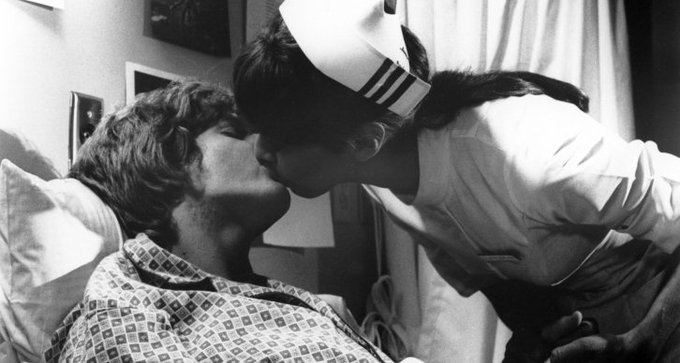HistMedのTwitterイラスト検索結果。 568 件中 19ページ目
"Physicist or physician? Scientist or healer? Artificially, these are divisions that have classified doctors through the ages. Luigi Galvani (1737-1798) showed that it was possible to be an amalgam of both." https://t.co/ezoFLyd9pr
#MedHums #HistMed
This lush and richly-colored sarsaparilla illustration comes from Robert Bentley's Medicinal plants (1880). Sarsaparilla was touted to have many medicinal uses, including helping with skin problems. #histmed #medicalbotany
This #MemorialDayWeekend, consider the poppy in this post on war, remembrance, and blooms on our blog: https://t.co/ocofIXMkzT #histmed
In preparation for his remarkable anatomy, Jean-Galbert Salvage (1770-1813) ordered a plaster cast of the Gladiator from the Musee Napoloen and worked it over, carving an anatomized interpretation into the plaster #histmed
No (errrrr....) way, Sherlock? Did you know Sir Arthur Conan Doyle’s first publication was in a medical journal? Celebrate his birthday, #OTD in 1859 by reading about his #histmed contributions https://t.co/mINkxiNdk1
For #MuseumWeek #SecretsMW, check out our new blog post by @historical_iris at https://t.co/SYTSygevHI to discover how Sodium Thiopental connects childbirth, spy fiction and Pearl Harbor. It’s always fun to find little secrets like this! #WomeninCulture #histmed #histpharm
Scottish anatomist Charles Bell composed this 1802 work for medical students, and aimed to offer accurately and simply-rendered illustrations of the arteries https://t.co/XJHysoisIJ #histmed
Early 20th century facsimiles based on 'Fasciculus Medicinae', a collection of medical texts first printed in 1491 with some of the earliest known anatomical woodcuts, including depictions of the pregnant body #anatomy #histmed #histsex #illustration #IDM2019
2004 May 2: Dr. John Michenfelder died; he was a major figure in neuroanesthesia https://t.co/2HyUjoPOU1 #histmed
My article 'A history of amulets in ten objects' has just been published by the @sciencemuseum journal! It's free, open access, and fantastic to be able to include so many images (& videos!) which help brings the research to life. https://t.co/uX4NvIMAjS #histmed #twitterstorians
This lush and richly-colored sarsaparilla illustration comes from Robert Bentley's Medicinal plants (1880). Sarsaparilla was touted to have many medicinal uses, including helping with skin problems. #histmed #medicalbotany
Wheeeee! For #FunFriday, our favorite cat on a toboggan, from Dr. Thomas' Eclectic Oil #histmed
Striking representations of secondary syphilis. These colour plates appeared in a work by James George Beaney, FRCSEd who intended them to serve as "pictorial illustrations of the ravages syphilis makes on the skin" #histmed #histsex #illustration https://t.co/912lFObzIF
Today’s Find: This 1970 film was the second one from Roger Corman’s low-budget production company & began a popular series of nurse “exploitation” films https://t.co/v2cCpRZ34F #histmed #histnursing
Astonishing illustrations catalogued today from Baumgärtner's 'Kranken-Physiognomik' (1842). 80 coloured lithograph plates of patients drawn "from nature" #histmed #ManMedProject
Medical illustrations by Christopher D’Alton.
Via:https://t.co/IUR64y2DPl
#disease #histmed
#medicalillustration
#DYK? Alchemy and medicine were connected in the eatly modern period, since beyond the idea of making gold, #alchemy offered the 'panacea', a medicine capable of healing all diseases. Pics: Medice&Alchemy print, 1512, and our own alembic. #histmed #TheMoreYouKnow #oldoptheatre
Today’s Find: "A Rather Straightforward Problem": Unravelling
Networks of Segregation in #Alabama’s Psychiatric Hospitals, 1966–1972 by Kylie Smith in the new book “Viral Networks Connecting Digital Humanities & Medical History” https://t.co/0OfO2Ez8wA #histmed
This amazingly detailed medical illustration depicts an aneurysm at the base of the brain. The attending surgeon was William Morgan (1791-1860) #drawingdisease #histmed













































